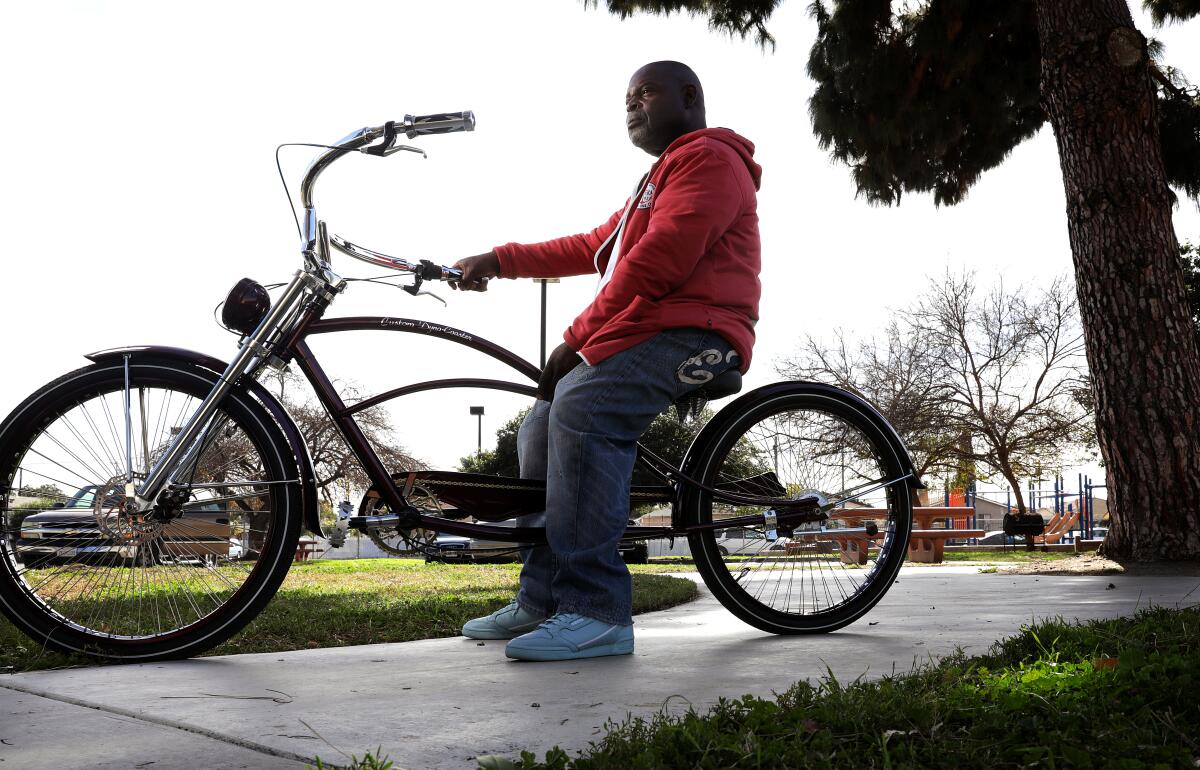Op-Ed: The only way to improve California’s gang database is to abolish it

The problem with CalGang, the statewide database of alleged gang members, is not the allegedly false entries by LAPD’s Metro division, weak controls, or criteria so absurd that police enter toddlers into it. As bad as these things are, the real problem is that CalGang exists at all.
Recent actions by Atty. Gen. Xavier Becerra and Los Angeles Police Chief Michel Moore to fix the database and prosecute its abuse by officers are commendable. And I work with many good officers who genuinely believe CalGang helps them protect people from gang violence.
But in my view, CalGang and its kissing cousin, “stop and frisk,” are the gateway drugs to mass incarceration.
Don’t get me wrong: I believe that anyone who commits violent crime should receive swift justice and an extended stay at the Graybar Hotel. That said, my law enforcement partners and I disagree on the merits of a tool that results in the industrial branding of poor black and brown men.
Rejiggering the criteria for landing on the list and adding new controls can’t fix the gang registry’s inherently destructive impact for a number of reasons.
First, intended or not, it is a major catalyst for our catastrophic levels of imprisonment. Harvard economist Raj Chetty documented how, in Watts, where the average annual income is $7,000 and CalGang is destiny, 45% of black men who grew up in the Nickerson Gardens housing project were incarcerated on one particular day. He estimates the lifetime chance of imprisonment for a black man who grew up in the census tract to be as high as 70% to 80%. That’s insane. Police may as well put toddlers in CalGang and put their cribs in the cells that await them.
Second, it doesn’t work. The systematic labeling of men and boys as gang members for wearing gang clothes, hanging out with gang members or just living in a gang area does not reduce gang activity or violence. The seminal report “A Call to Action: The Case for Comprehensive Solutions to Los Angeles’ Gang Violence Epidemic,” documented how, during Los Angeles County’s 35-year, $28-billion “war on gangs,” the number of gangs grew sixfold and some 50,000 people were identified as gang members (3% to 5% of whom committed violent gang crime). And now, a soon-to-be-released study from UCLA’s Luskin School of Public Affairs has found that comprehensive prevention and intervention, coordinated with partnership policing, significantly reduces violent gang crime, unlike the kind of search-and-destroy policing that has alienated so many communities.
Third, even if 100% of its roster were bona fide gang members, CalGang can give no clue to the stories behind the names. I think often of children I have seen go through the system, like Mahlon and Trevon, whose tragic case I reviewed 14 years ago. The two brothers grew up in the Crenshaw area gang minefield known as the Jungle. Mahlon twice refused to join his neighborhood gang. After his third refusal, the gang grabbed his baby brother Trevon and shot him dead. Mahlon joined the gang that day and landed on the CalGang roster the next month. Gang registries not only fail to account for the Sophie’s Choice we leave children like Mahlon to face, but compound their plight.
And finally, an unchecked database that relies on vague criteria and subjective, sometimes cynical assessments by officers is inherently unreliable. As former LAPD Deputy Chief Dennis Kato explained about how people land on the list, “We look for black men between the ages of 18 and 24 who look like gang members” in neighborhoods known to harbor gangs. The only good thing about this unconstitutional standard is that it isn’t quite as corrupt as entering every seventh name in the phone book.
“Garbage in, garbage out” is not a legitimate basis for funneling people into the insatiable maw of mass incarceration.
Tighter criteria, audits and investigations are good ideas but they do not fix the damage from the perpetual roundups, stops and physical showdowns that result from CalGang, fuel the prison pipeline and violate 4th Amendment protection guarantees. A policy that doesn’t reduce gang violence but feeds the prison pipeline doesn’t need mending. It needs ending.
Connie Rice is a civil rights attorney and author of “Power Concedes Nothing.”
More to Read
A cure for the common opinion
Get thought-provoking perspectives with our weekly newsletter.
You may occasionally receive promotional content from the Los Angeles Times.










